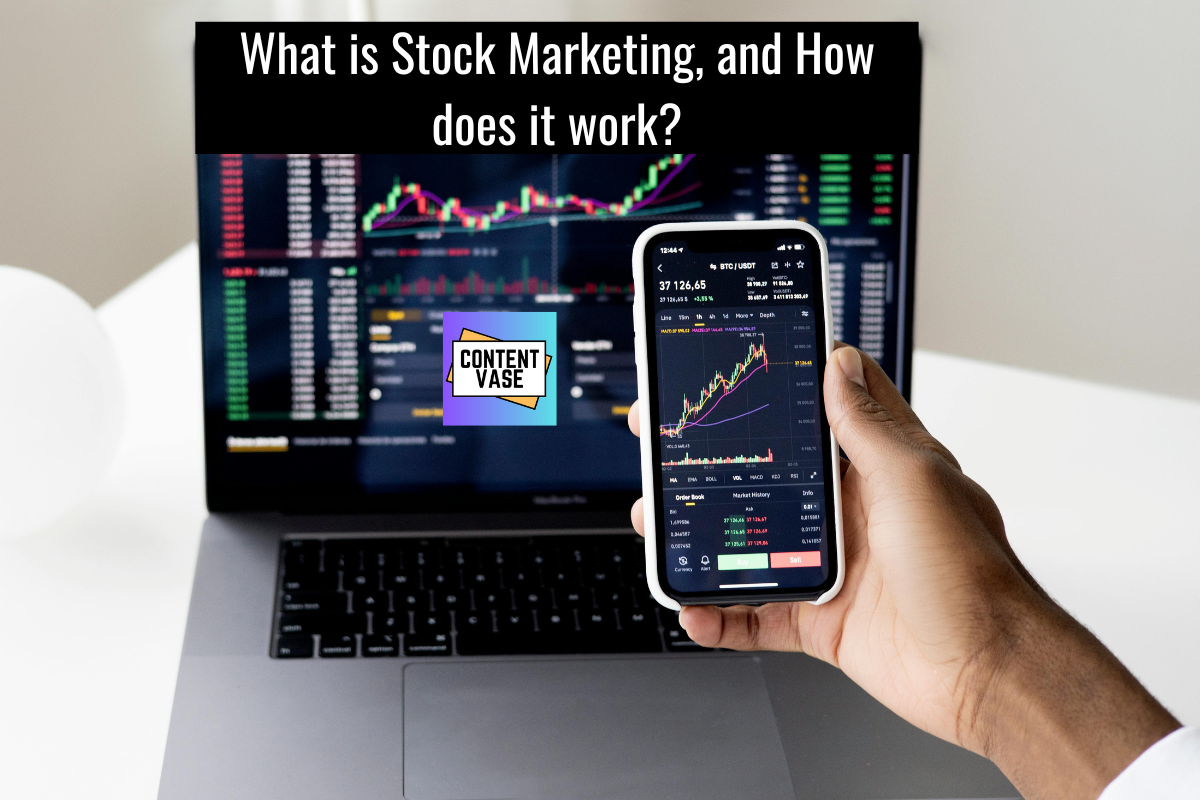What is Stock Marketing, and How does it work?
Whenever we start discussing the Stock Market, we all imagine getting rich at some point. But do we honestly know what a Stock is and how it works? If you have come this far, bear a few more minutes with us, and I guarantee that you will go from here with clear conceptions.
Stocks, also often called shares or equities, are those terminologies used to represent partial ownership in an organization or company. Basically, when a company needs funding to expand its business, it can do it in two ways. The first or the traditional way is to take out capital directly from investors in exchange for a portion of their companies’ partnership.
On the other hand, they can list their firm’s name on any Stock Exchange and sell their shares to the public. In the former method, ownership is limited to a few persons, and in the latter, anyone can own a partnership in that company.
Difference between Stock Market and Share Market
Several people get confused between these two interrelated terms. Plus, traders use both these words interchangeably to mean the identical thing. But the two terms are slightly different from each other. Before starting your investing career, you must clear any misconceptions you have. First of all, I’m going to break these terminologies into parts for your clear understanding.
The word “share” is linked with investment options like a limited partnership and mutual funds. But the exciting part is both the terms are based upon a similar thing – Trading.
- “Shares” are the units of the total valuation of a company. Let me give you an example. If you invest in a company, you will obtain a certain number of shares, entirely dependent on your invested amount.
- The “share market” is a market where an organization or company offers its shares to raise funding in order to grow its business. Simultaneously, the investors purchase those shares to acquire a portion of the ownership in that firm.
- It is a platform for buying and selling shares. If you purchase shares of a company, you become a “shareholder” of that company. For instance, when someone claims to own shares in a firm, it means he has invested in that specific organization and is a shareholder of that firm.
- Like every other company, if the firm makes progress, the investor also earns profits through dividends. Besides, if it does not perform well, the investor also has to face the loss.
The “Stock Market,” on the other hand, can also be termed a Stock Exchange. It is a place where people actively trade stocks, equities, and other securities and bonds.
- The word “stock” defines having an ownership certificate of any company.
- A stock market brings stock buyers and sellers together by providing them with an infrastructure to trade securely.
- Nobody can buy or sell the stock of a company if it is not listed on any stock exchanges. Further, some stockbrokers trade stocks, securities, and bonds of a firm.
- In India, every stock exchange is regulated by SEBI (Securities and Exchange Board of India). It was formed as a non-statutory body on April 12, 1988, by a resolution of the Government of India. They assure fair pricing and transparency of every transaction.
- Although there are plenty of Exchanges, the Bombay Stock Exchange (BSE) and the National Stock Exchange (NSE) are two of the primary stock exchanges in India.
- The price of any stock is set as per the supply and demand.
To be more precise with you, these are similar but with different modes of operation. A share market or stock market is basically a market where several kinds of bonds and securities are traded. Moreover, the price of a company’s stock depends on the supply and demand of that stock. Above all, a company can issue shares directly but can not directly issue stocks. On the other hand, when a number of shares are put together, it is called stocks. At the same time, shares have a small value, while stocks always have a big or significant value.
I hope you have now understood both the terms with their differences.
How Does the Stock Market Work?
As you clearly understand about Stocks, we are getting to the next part. But before that, I want to clarify that an ordinary firm or company can not participate in the Stock Exchanges. They should have a reputation and status before going public. Nevertheless, in “Stock Marketing,” those who purchase the shares are known as buyers, and those who sell are called sellers.
In addition, buying and selling are done through a network called “Stock Exchanges,” such as the BSE (Bombay Stock Exchange), NSE (National Stock Exchange), NASDAQ (an American stock exchange), etc.
I have mentioned the BSE and NSE only because these are the most famous Exchanges in India. The BSE, located at Dalal Street, Mumbai, is the first stock exchange in Asia. It was founded on July 9, 1875, and was previously called the “Native Share & Stock Brokers’ Association.”
Further, Sensex, the most popular BSE index, is calculated on the combined value of stocks of 30 reputed, established, and financially sound companies listed on the BSE. On the other side, NSE is new, but it is the largest Exchange in India. It started its operation in 1994 after getting recognized by SEBI in 1993. Like Sensex in BSE, NSE offers Nifty or Nifty 50 as its most popular index, the combined stock value of the 50 well-established and financially sound companies. By looking at these factors, a person can understand whether the economy is high or low.
Last Words
Companies list their stock in the Exchanges through a process called IPO (Initial Public Offering), and investors buy those shares. At the same time, those same investors can sell those shares to other people to earn more profit when the market is high or positive. Buyers offer a “bid” that is the highest amount they are willing to pay for a share. Simultaneously, sellers “ask” for a particular amount in exchange for that share, which is generally lesser than the bidding price. The difference is known as the “bid-ask spread.”
Last but not least, computers often do all the necessary calculations through their algorithms to determine how many traders are active to either buy or sell for a specific time frame. But remember, these characteristics will be revealed once a trade is finalized or the given timeline is completed.
Share this blog on the following social media platforms so that more people can benefit.
Other Blogs



